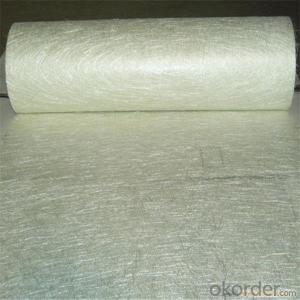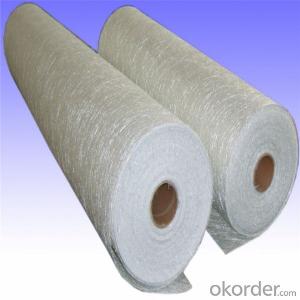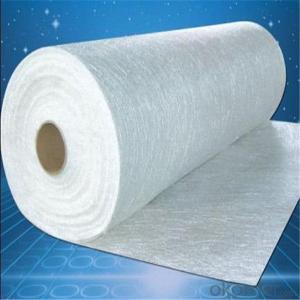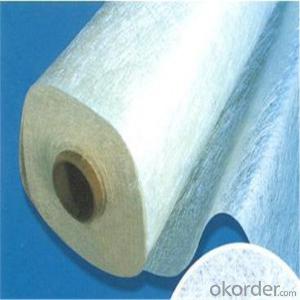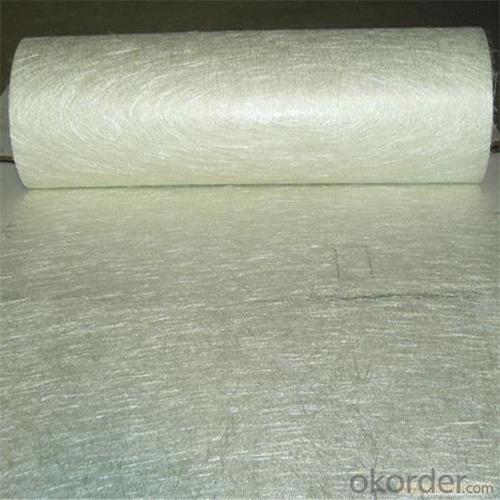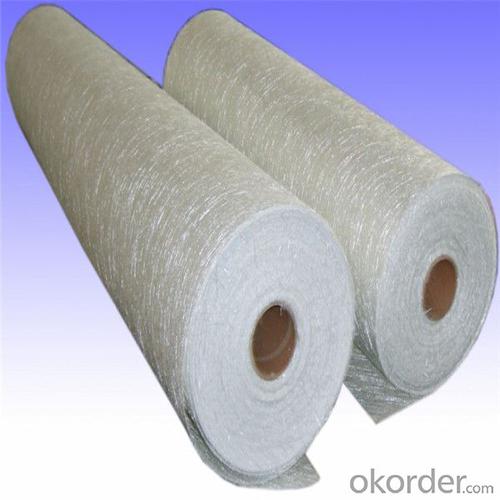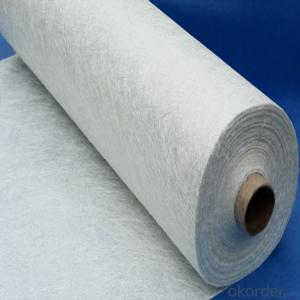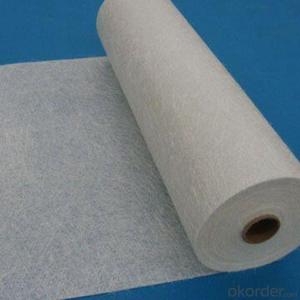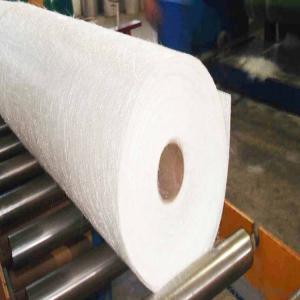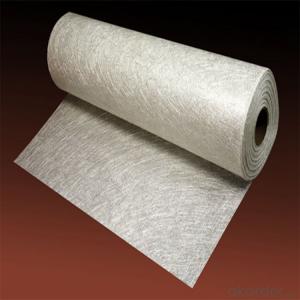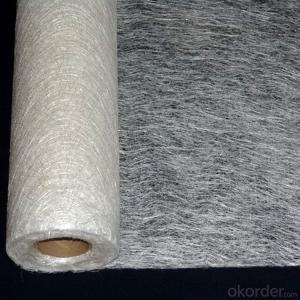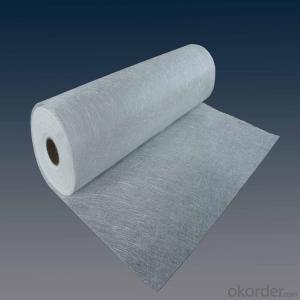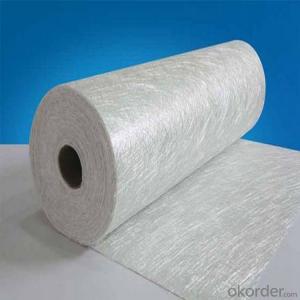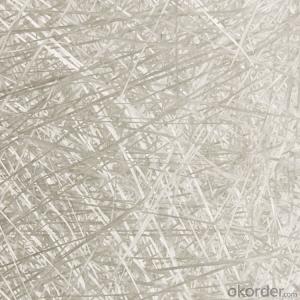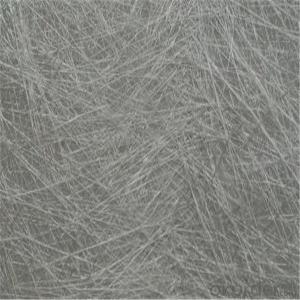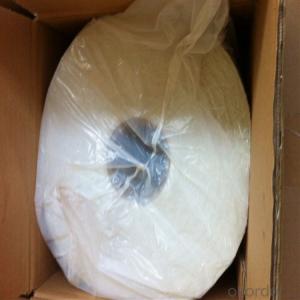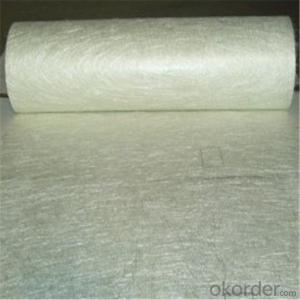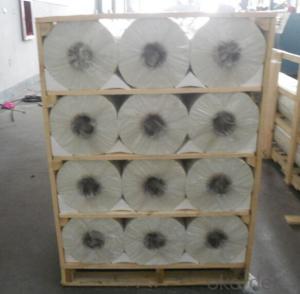Fiberglass Chopped Strands Stand Mat for Pp Panel Factory
- Loading Port:
- Tianjin
- Payment Terms:
- TT OR LC
- Min Order Qty:
- 100 m.t.
- Supply Capability:
- 20000 m.t./month
OKorder Service Pledge
Quality Product, Order Online Tracking, Timely Delivery
OKorder Financial Service
Credit Rating, Credit Services, Credit Purchasing
You Might Also Like
Quick Details
| Technique: | Chopped Strand Fiberglass Mat (CSM) | Dimensions: | 450gsm | Mat Type: | Continuous Filament Mat |
| Fiberglass Type: | E-Glass | Softness: | softness | Place of Origin: | Jiangxi, China (Mainland) |
| Brand Name: | cnbm | Model Number: | 450gsm | color: | white |
| fiberglass type: | E glass | product: | e-glass powder chopped stand mats | binder: | powder or emulsion |
| width: | 1040 or 1270mm, as your requirement | weight: | 30 or 45kg/roll | paper tube diameter: | 90mm |
| outer diameter of roll: | 256mm | packing: | plastic film+carton box + pallet |
Packaging & Delivery
| Packaging Details: | plastic film+carton box + pallet |
| Delivery Detail: | 15-20days |
Specifications
1.e-glass powder chopped stand mats
2.binder:power or emulsion
3.width:1040mm or 1270mm
4.weight:450gsm
Picture
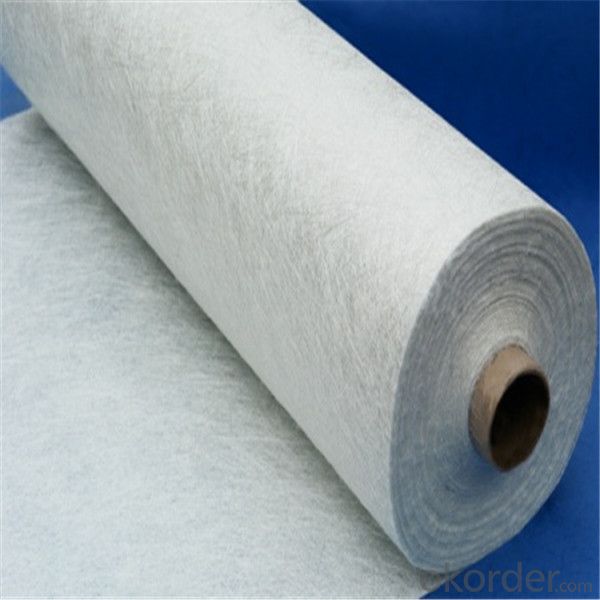

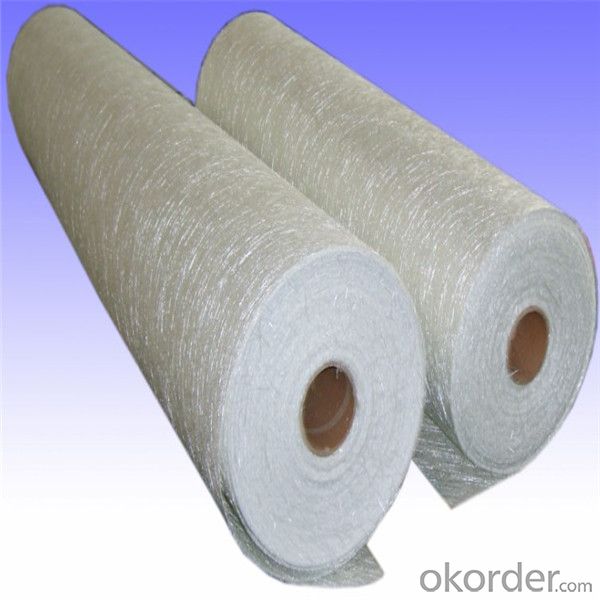

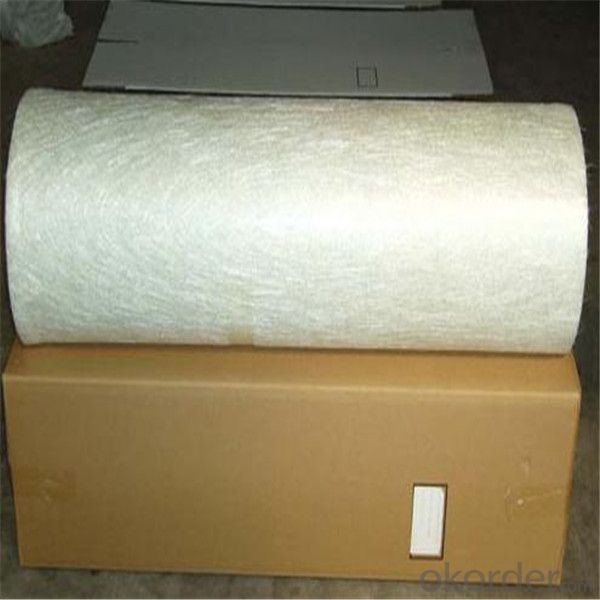
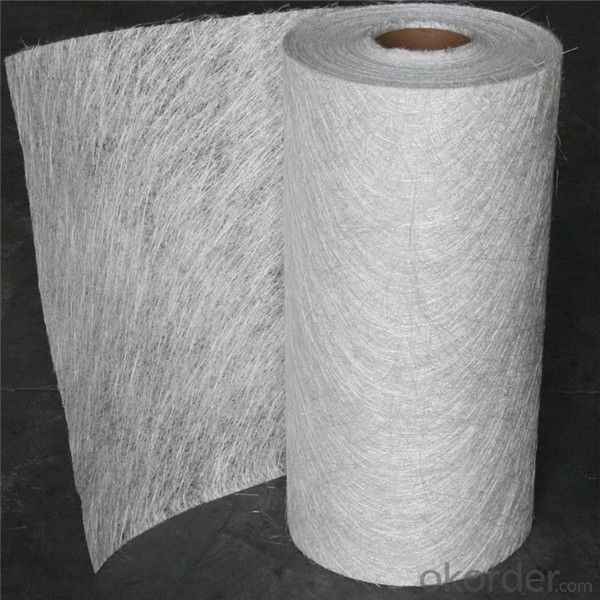
- Q: Is fiberglass chopped strand suitable for water tanks?
- Indeed, water tanks can be constructed using fiberglass chopped strand, which is highly suitable for the purpose. Fiberglass, known for its durability and versatility, is frequently employed in the building of water tanks. It possesses corrosion resistance, is lightweight, and boasts a favorable strength-to-weight ratio, rendering it an optimal material for water storage purposes. Furthermore, fiberglass is non-porous and impervious to water absorption, guaranteeing the tank's imperviousness to leaks. The utilization of chopped strand fiberglass further enhances the tank's structural integrity, making it an even more fitting choice for water tank construction.
- Q: Does fiberglass chopped strand improve the wear resistance of composite materials?
- Yes, fiberglass chopped strand does improve the wear resistance of composite materials. The fibers help strengthen the composite structure, making it more resistant to wear and abrasion.
- Q: How does the moisture absorption of fiberglass chopped strand impact its performance?
- The moisture absorption of fiberglass chopped strand can have a significant impact on its performance. Fiberglass is known for its excellent strength, durability, and lightweight properties. However, when exposed to moisture, it can undergo various negative effects. One of the main concerns with moisture absorption in fiberglass chopped strand is the potential degradation of its mechanical properties. Moisture can weaken the bonds between the glass fibers, reducing their overall tensile strength and stiffness. This can lead to a decrease in the structural integrity of the material, making it more prone to deformation, cracking, or failure under load. Additionally, moisture absorption can affect the dimensional stability of fiberglass chopped strand. As moisture is absorbed, the fibers can expand, causing dimensional changes in the material. This can result in warping, distortion, or other shape alterations, which can be detrimental in applications where precise dimensions are crucial. Furthermore, moisture absorption can lead to the growth of mold, mildew, or other microorganisms on the surface of the fiberglass chopped strand. This not only compromises the aesthetic appearance of the material but can also have health implications in certain environments. To mitigate these negative effects, manufacturers often apply protective coatings or treatments to fiberglass chopped strand to enhance its resistance to moisture absorption. These coatings act as a barrier, preventing or minimizing the penetration of water and reducing the risk of damage. In summary, the moisture absorption of fiberglass chopped strand can have a detrimental impact on its performance, compromising its mechanical properties, dimensional stability, and potentially promoting the growth of microorganisms. Therefore, it is essential to consider and address moisture-related issues when using fiberglass chopped strand in various applications.
- Q: How does the fiber dispersion uniformity of fiberglass chopped strand affect the quality of composites?
- The quality of composites is significantly influenced by the uniformity of fiber dispersion in fiberglass chopped strand. Fiber dispersion refers to how the individual glass fibers are evenly distributed within the composite material. To achieve optimal mechanical properties and overall performance, it is essential to have uniform fiber dispersion. When the chopped strands are evenly dispersed, they provide consistent reinforcement throughout the material. This leads to improved strength, stiffness, and durability. The uniformity ensures that the load is evenly distributed across the composite, minimizing the risk of weak spots or areas prone to failure. On the other hand, if the fiber dispersion is not uniform, it can result in various quality issues in the composites. Uneven distribution of fibers can create localized areas of high fiber concentration, causing stress concentrations and potential weak points. These weak points compromise the overall strength and structural integrity of the composite, making it more susceptible to cracking, delamination, and failure under load. Non-uniform fiber dispersion can also cause variations in the mechanical properties of the composite. Inconsistent reinforcement distribution leads to variations in stiffness, strength, and other mechanical characteristics across different regions of the composite. This lack of uniformity negatively impacts the predictability and reliability of the material, making it challenging to design and manufacture composite components with consistent performance. In conclusion, the fiber dispersion uniformity of fiberglass chopped strand is crucial for determining the quality and performance of composites. A uniform dispersion ensures even reinforcement distribution, resulting in improved mechanical properties and overall durability. On the other hand, non-uniform dispersion can lead to weak points, inconsistencies in mechanical properties, and reduced reliability of the composites. Therefore, maintaining a high level of fiber dispersion uniformity is essential for producing high-quality composites with consistent performance.
- Q: What are the disadvantages of using fiberglass chopped strand?
- There are several disadvantages of using fiberglass chopped strand. Firstly, fiberglass chopped strand has a lower tensile strength compared to other reinforcement materials such as carbon fiber. This means that it may not be as effective in providing structural support in certain applications. Secondly, fiberglass chopped strand is prone to fraying and splitting. This can make it difficult to handle and work with, as it may require additional steps such as sealing the ends to prevent further damage. Additionally, fiberglass chopped strand is not as resistant to heat as some other materials. It can start to degrade and lose its properties at high temperatures, limiting its use in applications where heat resistance is crucial. Furthermore, fiberglass chopped strand has poor resistance to chemicals and solvents. It can easily be damaged or weakened when exposed to certain substances, which can limit its usability in various industries. Lastly, fiberglass chopped strand is not biodegradable and can be difficult to recycle. This can pose environmental concerns, especially when used in large quantities or disposed of improperly. Overall, while fiberglass chopped strand has its advantages such as being lightweight and cost-effective, it is important to consider these disadvantages before choosing it as a reinforcement material.
- Q: What are the quality control measures for fiberglass chopped strand storage and handling?
- Quality control measures for fiberglass chopped strand storage and handling typically include the following steps: 1. Proper storage conditions: Fiberglass chopped strand should be stored in a clean, dry, and temperature-controlled environment to prevent moisture absorption and maintain its integrity. 2. Handling procedures: Personnel involved in the storage and handling of fiberglass chopped strand should be trained to handle the material with care, avoiding excessive bending, crushing, or dropping that may cause damage. 3. Packaging integrity: The packaging of fiberglass chopped strand should be inspected to ensure it is intact and free from any punctures or tears that could lead to contamination or moisture absorption. 4. Regular inspections: Regular visual inspections should be conducted to check for any signs of damage, such as broken strands, discoloration, or foreign particles, which may affect the quality of the material. 5. Documentation and traceability: Proper documentation and labeling should be maintained to track the storage and handling of fiberglass chopped strand, allowing for traceability and accountability in case of any quality issues. Overall, these quality control measures aim to ensure the proper storage and handling of fiberglass chopped strand, minimizing the risk of contamination, damage, or degradation, and ultimately maintaining the desired quality of the material.
- Q: Can fiberglass chopped strand be used in the production of electrical insulation materials?
- Indeed, the utilization of fiberglass chopped strand is feasible for the manufacturing of electrical insulation materials. Renowned for its exceptional electrical insulation characteristics, fiberglass proves to be an optimal selection for situations necessitating electrical insulation. When presented in the form of chopped strands, fiberglass is comprised of brief fibers that can be combined with other substances and processed to generate an array of insulation products like tapes, sheets, and coatings. The chopped strand configuration facilitates superior dispersion and distribution of the fibers within the material, thereby augmenting its electrical insulation capabilities. Furthermore, fiberglass chopped strand exhibits resistance to elevated temperatures, chemicals, and moisture, thereby further enhancing its suitability for electrical insulation applications.
- Q: What are the typical processing temperatures for fiberglass chopped strand composites?
- The typical processing temperatures for fiberglass chopped strand composites can vary depending on the specific resin system being used. However, in general, the processing temperatures for these composites range from 150°C to 200°C (302°F to 392°F). These temperatures are necessary to achieve proper resin flow and curing, ensuring the desired mechanical properties and structural integrity of the final composite product. It is important to carefully follow the manufacturer's guidelines and recommendations for the specific resin and reinforcement being used to ensure optimal processing temperatures are achieved.
- Q: How does the length of chopped strand affect its performance?
- The length of chopped strand affects its performance by influencing the strength, stiffness, and overall mechanical properties of the material. Shorter strands tend to provide better impact resistance and improved dispersion within the matrix, resulting in enhanced toughness and resistance to cracking. On the other hand, longer strands offer higher strength and stiffness, making them suitable for applications that require structural integrity and load-bearing capabilities. Ultimately, the choice of strand length depends on the specific requirements of the intended application.
- Q: How does the fiber length of fiberglass chopped strand affect its performance?
- The fiber length of fiberglass chopped strand plays a significant role in determining its performance. Longer fibers in chopped strand provide several advantages over shorter fibers. Firstly, longer fibers enhance the mechanical properties of the fiberglass composite. Longer fibers offer improved strength and stiffness, making the composite material more resistant to deformation and capable of withstanding higher loads. This results in a stronger and more durable final product. Secondly, longer fibers improve the interfacial bonding between the fiber and the matrix material. The longer fibers provide a larger contact area with the matrix, allowing for better stress transfer between the two components. This improved bonding enhances the overall performance of the composite by increasing its ability to resist crack propagation and delamination. Additionally, longer fibers can improve the impact resistance of the fiberglass composite. The longer fibers act as reinforcements, absorbing and distributing the energy generated during impact events. This helps prevent cracks from propagating and enhances the material's ability to withstand sudden forces. However, it is important to note that there is an optimal fiber length for specific applications. Longer fibers may not always be advantageous, as they can increase the viscosity of the resin and make it more challenging to process. Moreover, longer fibers may be less effective in applications that require good flowability or where the composite needs to conform to complex shapes. In conclusion, the fiber length of fiberglass chopped strand significantly influences its performance. Longer fibers contribute to improved mechanical properties, better interfacial bonding, and enhanced impact resistance. However, the optimal fiber length should be carefully determined based on the specific requirements of the application to balance performance with processability.
Send your message to us
Fiberglass Chopped Strands Stand Mat for Pp Panel Factory
- Loading Port:
- Tianjin
- Payment Terms:
- TT OR LC
- Min Order Qty:
- 100 m.t.
- Supply Capability:
- 20000 m.t./month
OKorder Service Pledge
Quality Product, Order Online Tracking, Timely Delivery
OKorder Financial Service
Credit Rating, Credit Services, Credit Purchasing
Similar products
Hot products
Hot Searches
Related keywords
